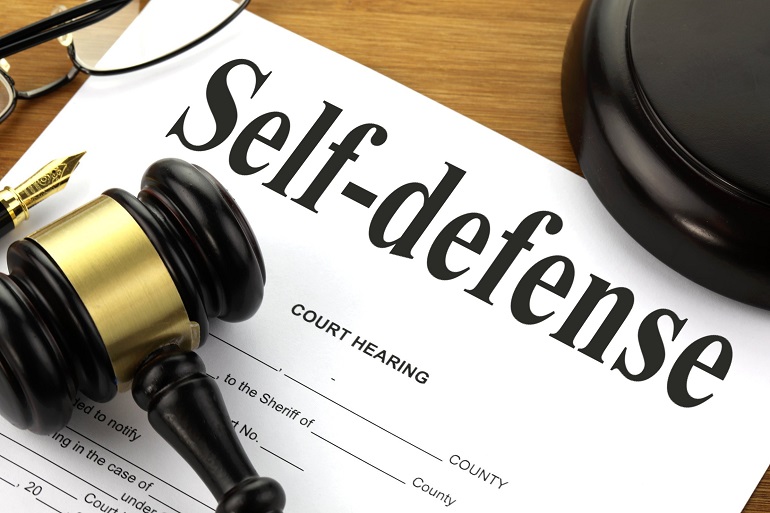The right of self-defense never ceases. It is among the most sacred and alike necessary to nations and individuals. Self-defense doesn’t mean that it is an act to support violence or crimes. Malcolm X, a famous social activist, and the clergyman was defined as:

“I don’t call it violence when it’s in self-defense; I call it intelligence.”
If a person kills someone in self-defense, this type of killing will not be considered manslaughter or murder. However, if you are supposed to protect yourself by ending the life of another who exhibits an evil desire to harm you, you will have been through one of the most daunting situations. Regrettably, determining whether your actions constitute killing or self-defense isn’t always straightforward.
Sometimes, killing or murder of someone is translated as self-defense. However, it is not justifiable if life has ended and the culprit, without any reasonable justification like being in imminent danger, claims their actions as self-guard. Some laws clearly define boundaries that could define an action as self-defense or killing.
Before proceeding further, let’s understand the difference between slaying and self-defense.
Difference Between Self defense and Manslaughter

Every citizen has the right to use reasonable force to protect them from harm. For example, a defendant charged with slaying may consider a defense of self-guard if there is evidence that they honestly have a reasonable belief that the use of deadly force which resulted in death was necessary to protect their safety.
If any proof of protection is present, the court must release a defendant unless the state can prove beyond a reasonable doubt that a self-guard claim is inaccurate. The specific circumstances of each case, such as which party was the initial aggressor or which party escalated violent imminent harm or crime, will significantly impact the success of a legal defense.
On the other hand, killing is often mistakenly thought to be accidental killing. This is not true. If death is purely accidental, no crime has been committed. For a criminal defense lawyer to make a charge of slaying stick, he or she must prove that one of the following criteria is true. The defendant’s negligent or reckless actions and disregard for risk caused another person’s death. This type of unintentional homicide is known as involuntary slaying.
The defendant was strongly provoked and killed in the “heat of passion” without premeditation. This is known as voluntary slaying.
Types of Manslaughter
Manslaughter can be divided into two categories:
- Voluntary Manslaughter
- Involuntary Manslaughter
Voluntary manslaughter is the occurrence of a homicide that is provoked and occurs in the “heat of passion.”
Involuntary killing is an occurrence of homicide that is unintentional /accidental due to reckless or negligent conduct.
First Type: Manslaughter by Act

It is a form of voluntary slaying that involves committing an intentional action that is blameworthy and not justified, resulting in the death of another individual.
Second Type: Manslaughter by Procurement
It is a voluntary slaying where somebody persuades someonne to commit an action resulting in another person’s demise.
Third Type: Manslaughter by Culpable Negligence
It is a form of involuntary killing in which someone engages in negligent conduct that shows a reckless disregard for the safety and welfare of others.
Fourth Type: Aggravated Manslaughter
It is the fourth type in which the death of a child under 18 is caused by the culpable negligence of the child’s caregiver. Someone who did not commit the crime but knew of the neglect/abuse and failed to protect the child can be charged with the aggravated slaying.
Examples of Manslaughter
- Suppose a defendant drove his or her car while under the influence of drugs or alcohol and killed someone unintentionally. In that case, involuntary manslaughter occurs, and then will charge because it was caused by her recklessness, even though there was no intent except to kill someone in self-protection.
- If a spouse catches his/her other half cheating and kills the lover on the spot, he/she may be charged with voluntary manslaughter rather than murder because he/she was provoked by the shock of the affair and killed in a fit of high temper without planning.
Self Defense Slaying
It is critical to understand that different states have different laws or guidelines regarding the application of self-protection. For example, some states impose a duty to retreat on the defendant in which they must first attempt to escape the source of danger before exerting deadly force to assert this protection. Other states only permit someone not to retreat if they were in their own home at the time of the attack. The defendant was engaged in criminal activity when they claimed safety.
The American justice system recognizes the right of someone to protect him or herself from harm. However, for security to apply, the defendant must have believed that they were in imminent danger of harm and that the use and degree of lethal force.
Accidental Slaying
Another factor says that someone may commit an accidental slaying. If their behavior did not rise to a criminal level, he or they could not be claimed criminally responsible. However, there may still be a civil liability if the conduct was negligent but not criminally negligent. In this case, someone may be sued for causing someone else’s demise.

Legal Support & Conclusion
When it comes to self-protection, it is defined earlier that every state has its laws. A person facing serious criminal charges may contact a criminal lawyer for legal support. They can explain the defendant’s rights and situations in the jurisdiction where the criminal charges are pending. They can carefully analyze the circumstances of the case. The respectable jury will also ensure the delivery of justice because, according to Thomas Jefferson:
“Laws that forbid carrying arms disarm only those who are neither inclined nor determined to commit crimes. Such law makes things worse for the assaulted and better for assailants: they serve rather to encourage than to prevent homicides, for an unarmed man may be attacked with greater confidence than an armed man”.





